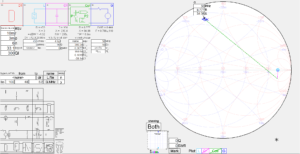One of the ham fashions of proposed solutions to characterising a balun is to find the Common Mode Rejection Ratio (a term carried over from other applications, eg voltage driven operational amplifiers).
(Anaren 2005) explains a method of finding balun CMRR. Anaren gives a definition of CMRR:
Common Mode Rejection Ratio is defined and the ratio between the differential mode insertion loss/gain versus the common mode signal loss or gain.
Note that in a passive system, CMRR (or CMR) in dB will usually be positive, and the larger the better. You might even think that the plain English meaning of the words Common Mode Rejection Ratio would suggest that a large ratio (or high +ve dB value) would mean most rejection, goodness. Such a meaning would be quite consistent with that of CMRR (CMR) applied to operation amplifiers (for a very long time).
Anaren does not mention applying the CMRR statistic to antenna systems. I have commented elsewhere on the lack of utility of CMRR in analysing common antenna systems.
Then immediately after the above definition, they give a formula which implies the inverse:
\(CMRR=\frac{S_{1c}}{S_{1d}}\) and goodness would be a tiny fractional value, or a small (-ve) dB value.
John, KN5L, has published his own solution to balun characterisation in some online forums. Continue reading Comment on KN5L on balun CMRR – coax example
Last update: 23rd January, 2022, 3:04 PM






